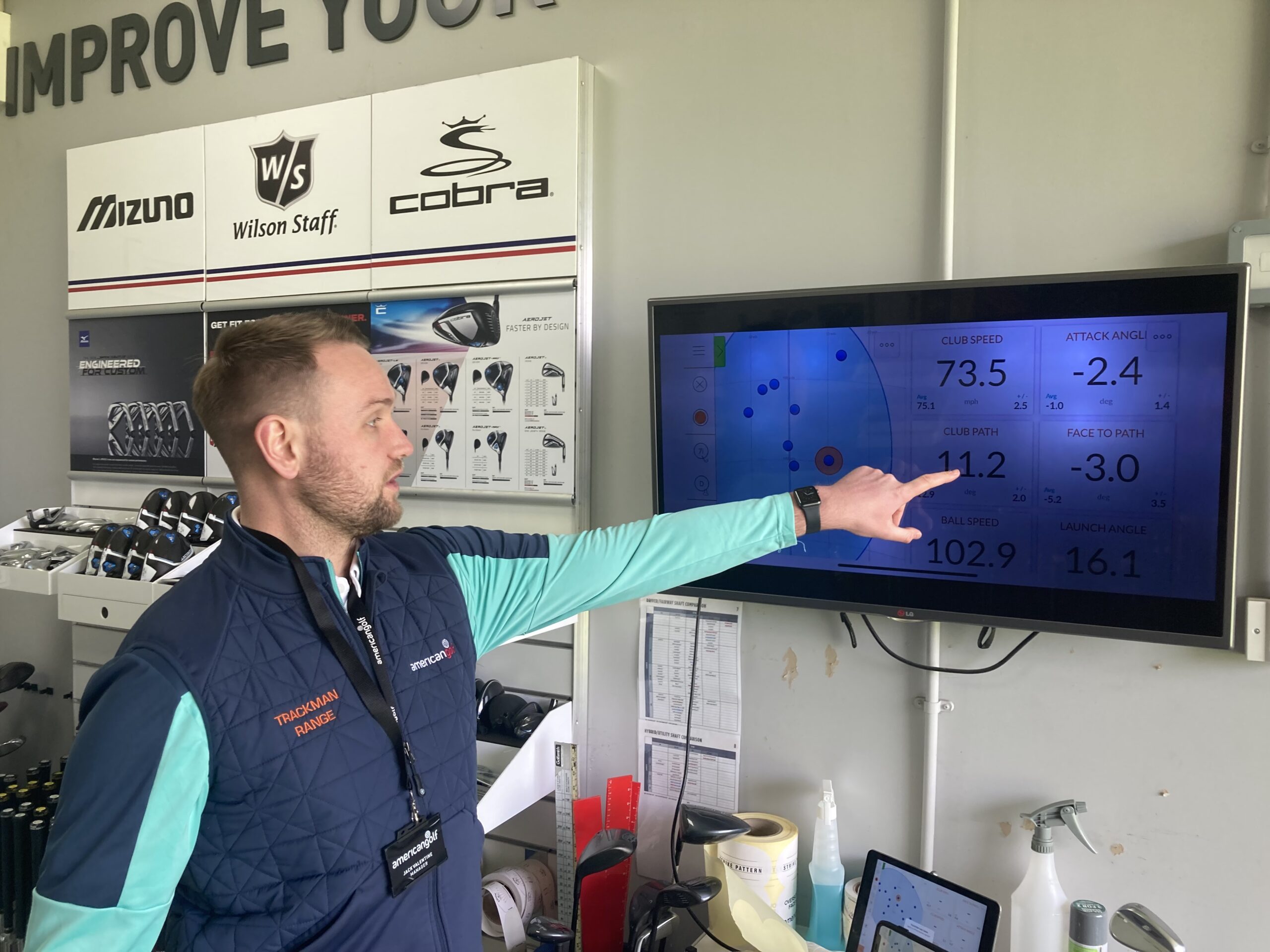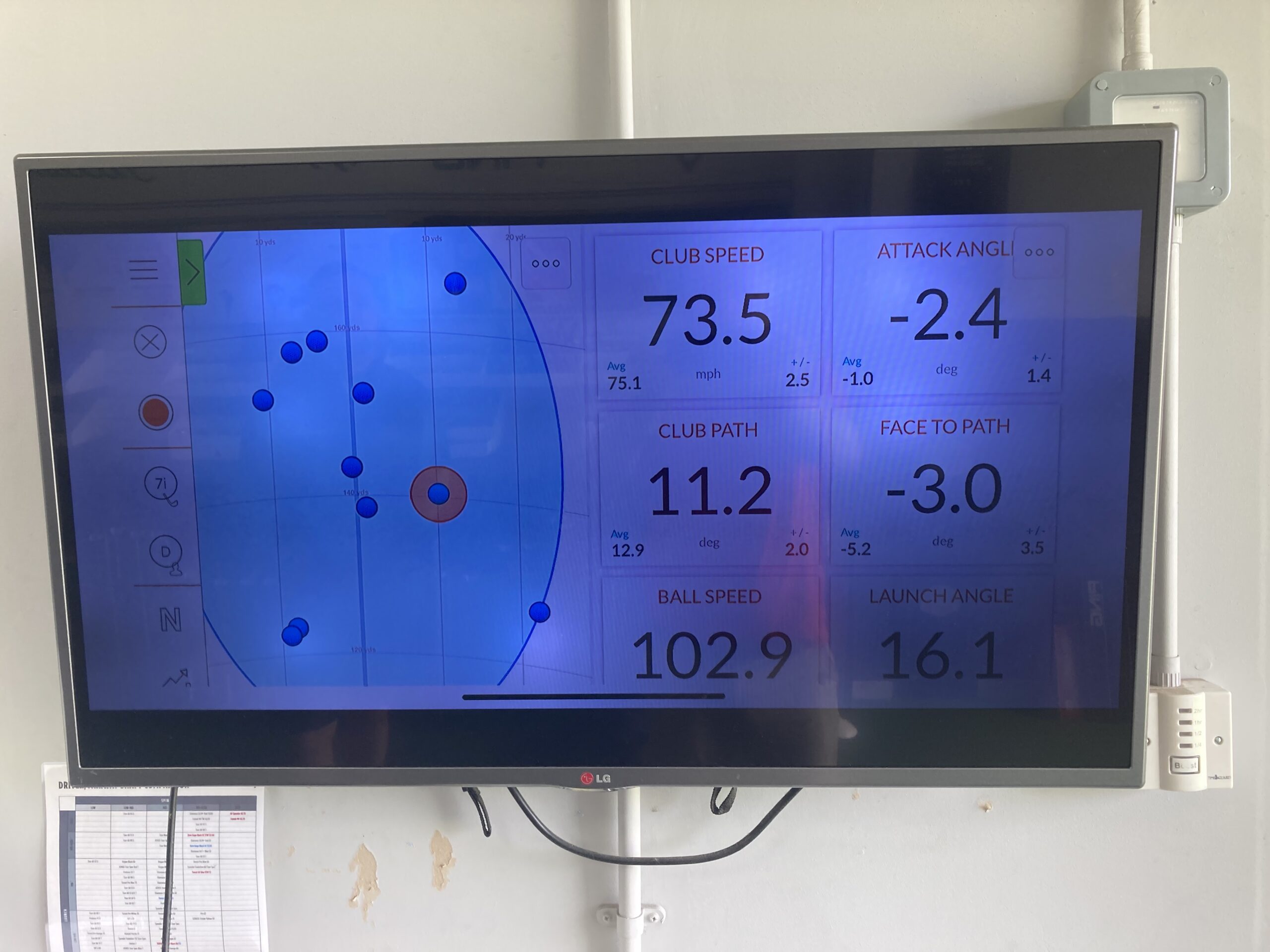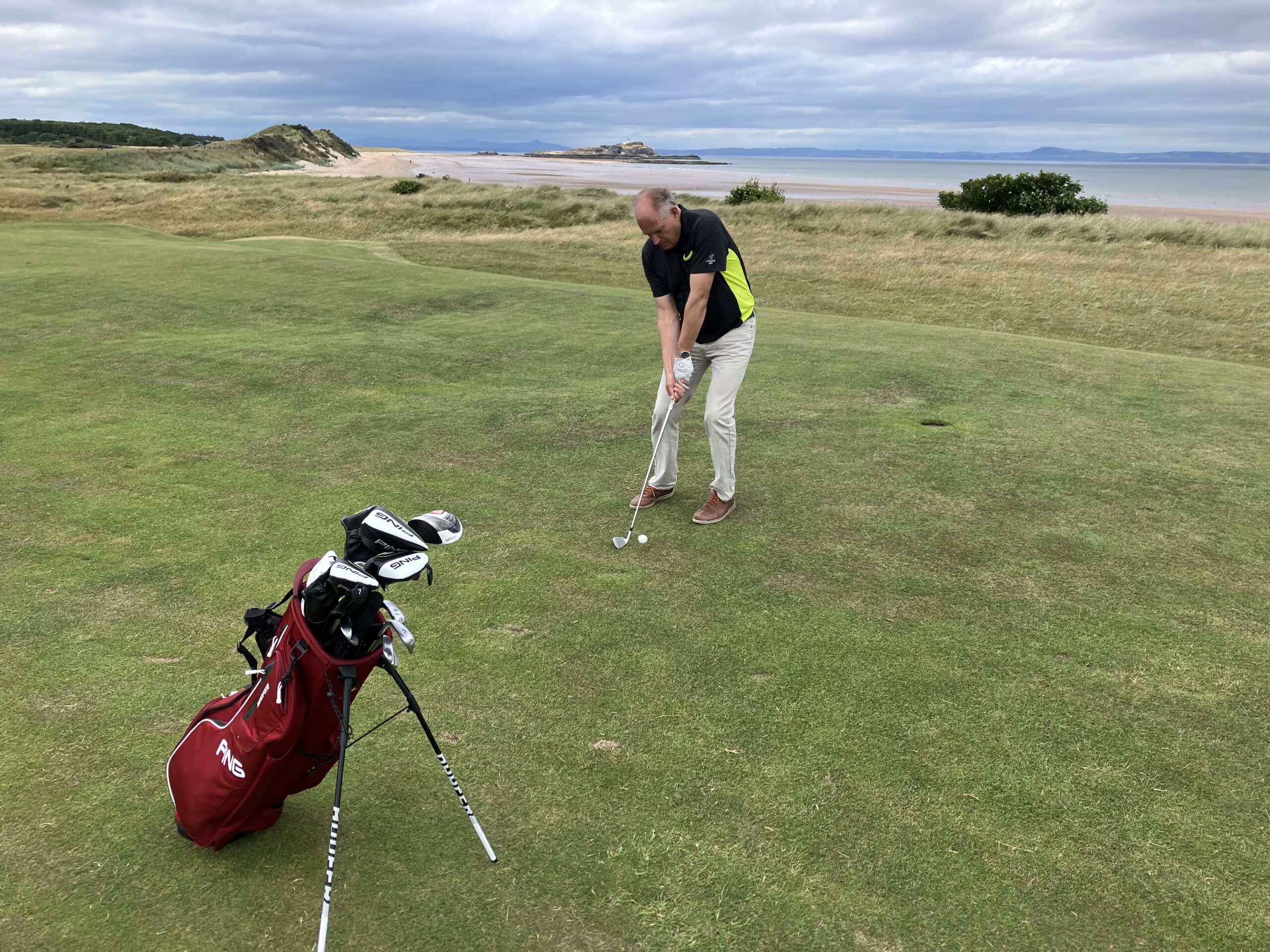When happy hacker Richard Bath decided he needed new golf clubs, he turned to the experts with American Golf’s custom-fitting service.
“How long have you had those clubs?” said a golfing companion to me recently. “Not long,” I said, before thinking hard and coming up with a firm number. “About twenty years – so really, no time at all.”
He snorted back at me. “You know they say you’re supposed to change your clubs every three years,” he laughed. “Maybe that explains a lot…”
It was pretty rude, but he had a point. After all, I’ve long felt like I’m a single-figure handicapper stuck in the body of a common-or-garden hacker. I had always thought that the three-year thing was dreamed up by golf companies desperate to shift their stock, but what if he was right? What if the only thing holding me back from Tigerish scores is substandard gear? Maybe the problem if not me but my clubs?
The thought of a parallel golfing universe waiting to be realised ate away at me until eventually, one morning, after booking a two-hour consultation, I found myself at American Golf’s superstore at The Braids, in Edinburgh chatting to one of their expert club fitters, a cheery twentysomething called Jack Valentine.
“Can you,” I asked Jack, “make me a better player?”
He looked at me. “I don’t give lessons, so no, I can’t,” he replied. “But I can make sure you’ve got clubs which perfectly suit your game and allow you to post the lowest scores you’re capable of posting. You’d be amazed at what a difference having custom-fitted clubs can make.”
Ten minutes later we had walked to the back of their huge store and I was standing in a stall looking out at a driving range. The first thing Jack did was to look at my current clubs. They are, he told me, an inch too short for my 6ft 5in frame, something which we’d sort with my new clubs. Every inch, he said, would add two degrees to the trajectory of my shot.

Behind me, ready to record the angry octopus which doubles as my golf swing, was their Trackman machine, which videos your swing and breaks it down into a bunch of statistics which inform the club fitter’s art. A range of a dozen different clubs were put to one side of me and the festivities began.
The process is twofold. First, the Trackman is allowing Jack to objectively analyse my swing so that he can adapt the clubs and try to work out what ones work the best for me. The second thing that’s happening is that I’m deciding which clubs I most like the feel of (while inevitably, subconsciously, I’m working out how much I’d like to spend).
Having your swing deconstructed is a fascinating process. At some stage I’d like to have lessons, but at my stage of life, with muscle memory deeply ingrained after forty years of dodgy technique yet with precious little time to practise in order to embed any changes, I need clubs which work with what I already have. This, it turns out, is an out-to-in and pretty rapid swing, a very upright stance, and a very flat launch angle which leads to a low trajectory but an acceptable spin rate.
But it’s not just about the Trackman. One interesting exercise saw tape applied to the bottom of the club before taking a shot off a surface specifically designed for the purpose. The resulting marks would tell Jack the angle of the club at impact so that he could adjust the club head to suit me and maximise the size of the sweet spot.
Gradually, we worked out which of the numerous brands and styles of clubs worked best for me, and the results were often counterintuitive. I, for instance, have been used to irons with a really heavy club head thanks to my venerable Taylor Made irons, but found that I was actually hitting the ball further and straighter with lighter clubs, especially those with a bigger sweet spot. Eventually, I simply asked Jack to look at the stats and see which clubs were allowing me to hit the ball the furthest. These turned out to be the cavity-backed Ping G430, which I later found out are widely seen as the best clubs on the market for mid-to-high handicappers (if you doubt me, take a look at James Robinson’s YouTube golf channel).

But not all the irons worked for me. I’ve never used a rescue club before, and just could not work with one. Eventually, Jack suggested I try a seven wood instead, and the results were instantly transformed.
Next up were the woods, and once again I had to rely on Jack (who, it turns out, is a four handicapper, so a pretty decent golfer) for guidance. My most consistent shot has been off the tee using my Taylor Made R11 driver, but it was massively adjusted to correct my horrible slice, so I was nervous about changing. However, the R11 isn’t the only driver that can be modified, and after checking the data from the Trackman, Jack weighted the bottom of the G430 driver which once again successfully corrected my slice.
The final task was to find myself a new putter, and for this we left the Trackman behind and went into American Golf’s indoor putting area. Again, I tried a whole host of putters, until Jack pointed out that as all the rest of my clubs were Pings it made sense to pick a Ping putter too. Once we’d decided this, the Anser PLD Milled Matte black putter – which was the closest in style to my previous putter – was the clear winner.
Finally, I opted for a Hoofer bag on the basis that it was light but big enough to fit in all the clubs. On that front, I eventually opted for 13 clubs – three woods (a driver, 3 and 7), a putter, five irons through from 5-9, and four wedges (a pitching wedge, 45 degree, 54 and 58).
The next step was to wield the weapons in anger, and for that I headed off to Dalmahoy, to the south of Edinburgh. A parkland course, the fairly tight and massively wooded West Course is possibly the worst place to start, although I got some sense of the travails to come during my hour in the driving range beforehand. The wedges were good, so was the putter and the two fairway woods, but I was so bad with the driver and mid-irons that I was like someone who had never played before. The other bit of good news was that the new clubs were exponentionally lighter than my old ones, which is not unimportant when you habitually carry your clubs.
If the Dalmahoy trees got a rare pummelling, there were also some signs of progress (although, to make the round even more difficult, my son Lochie excelled with my old clubs). Things got better at my home club of Bruntsfield, largely because – unlike with my old Taylor Made clubs – I decided to swing slower and softer, and to allow at least one more club than I am used to. Suddenly, the clubs were doing the work and I was getting decent distance and a greater consistency of strike.
The process continued with a round on the links at North Berwick where I finally managed to use the driver proficiently, apart from on the 18th where my tee shot leaked right, just missing a row of cars before bouncing on the road and into some poor soul’s back garden. At least there was no sound of breaking glass (same as last time!). I’m still struggling to attain the sort of consistency I’d hoped for, but it’s clearly coming. Lessons are next, although in all honesty I pity the poor pro landed with me.

So is it worth getting fitted for new clubs? Even at a leading outlet like American Golf, where the prices are pretty keen thanks to their buying in bulk, the cost is substantial. But, like lessons, this is an investment in a game which takes up a huge number of waking hours for its devotees and which I hope to be playing long into my dotage. A set of seven fitted G430 irons costs £979, while the driver is £499 and the other two woods come in at £329 each (with a £30 discount if you buy more two woods). The Anser PLD Milled Matte black putter came in at £379, while the Ping Hoofer golf bag with stand came in at £184.99.
That’s a hefty price tag, but I’m now playing with clubs that I know have been selected especially for me, and modified accordingly. Single figures, here I come…
American Golf, Braidhills Golf Range, 91 Liberton Dr, Edinburgh EH16 6NS; 0131 664 2001; www.americangolf.co.uk; open 9am – 8pm Mon-Fri, 9-6 Sat-Sun.
Read more on Scottish Field’s Outdoors pages.
Plus, don’t miss the July issue of Scottish Field magazine.
TAGS

